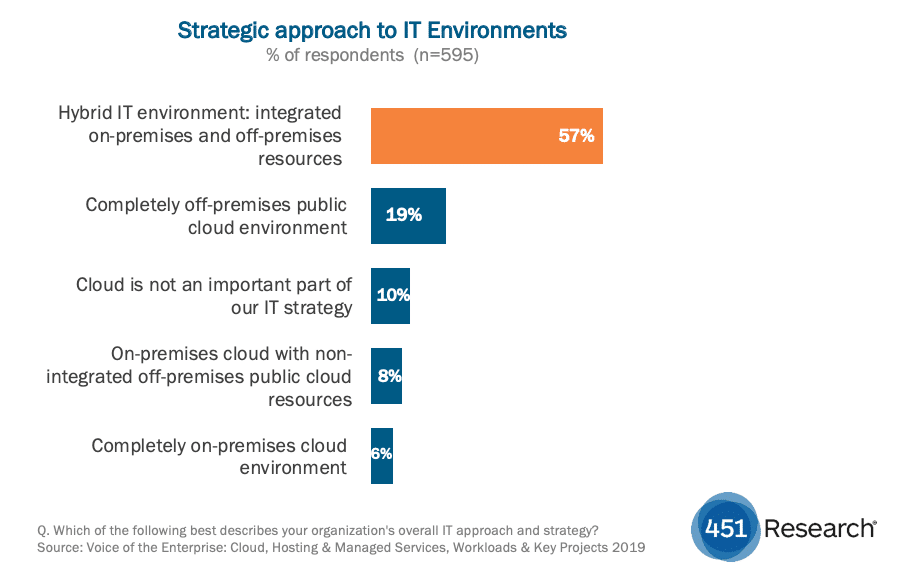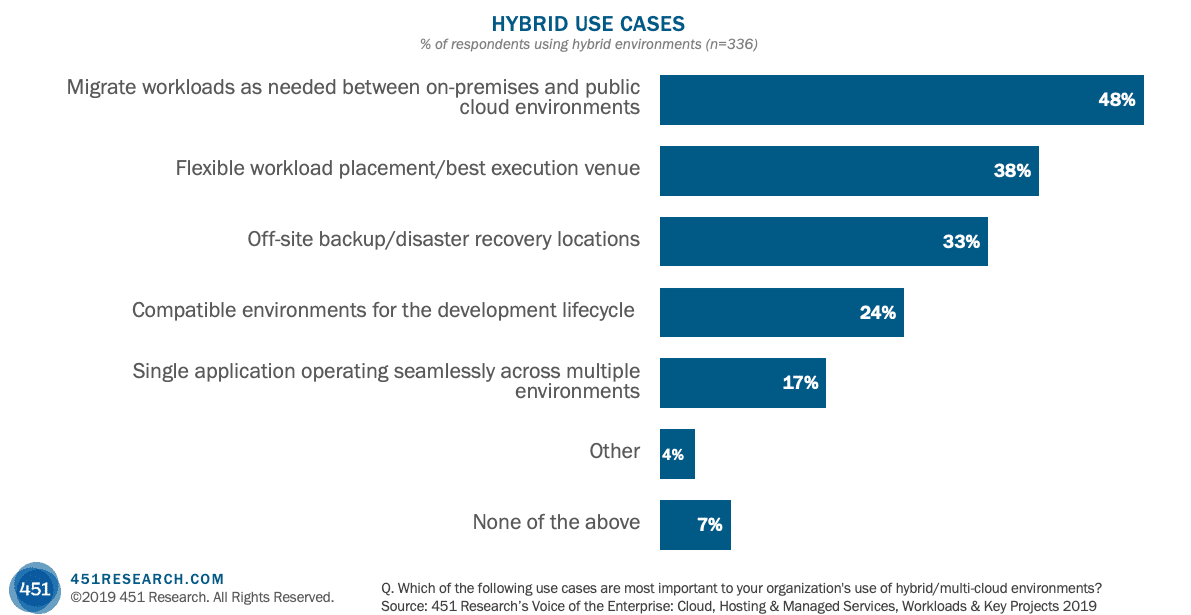How to Choose the Best Venue for Workloads | IT Strategy

If there’s anything that can be said about today’s IT environment, it’s that choice abounds, which is why we find ourselves smack dab in the middle of this hybrid reality in which we now exist.
In a recent 451 Research study, they asked respondents how they would best describe their overall organization’s IT strategy, and 57% said hybrid IT environments, where there’s an integrated environment of on-premises and off-premises resources. And for all of the buzz about going all-in to the public cloud a few years ago, they found that only 19% of organizations have taken a completely off-premises approach.

But why has hybrid become the primary approach for today’s IT organizations? It really comes down to flexibility – flexible workload migration and placement options that enables each workload to live on its best execution venue (as 451 likes to call it).

But alas, with hybrid comes complexity, often making it difficult to determine exactly which platform aligns best with each workload. So, with so many options out there – on-prem, on-prem private cloud, hosted private cloud, IaaS, PaaS and SaaS – how does one determine the best execution venue (BEV) for each workload? 451 breaks the BEV considerations down (in order of importance) as:
- Cost (55%)
- Security (53%)
- Application performance (32%)
- Platform reliability (31%)
- Government regulation/data sovereignty (22%)
- Regulation/compliance (18%)
- Governance/company policy (17%)
- Latency considerations (13%)
- Software vendor requirement (9%)
There’s a lot there to be considered when making the BEV decision. So, at OneNeck, we follow a wheel of fortune of sorts when we’re working with our customers in determining their BEV across their portfolio of applications. OneNeck’s VP of Advisory Consulting, Jeff Budge, describes our wheel like this…
“A lot of what we’re trying to do with our customers involves identifying needs, setting the governance, understanding their application portfolio, looking at business value and technical fit, and that very important task of assessing TCO at a detailed and comprehensive layer. Then we come up with a scoring methodology to let us figure out not just what applications are the most important for them to make business decisions, but then can those priorities indicate which venues they need to gain better skills in sooner rather than later. From there, we can determine placement of the workload in the venue.”
But even when you find the perfect-fit venue for a workload, it may not be permanent. Melanie Posey, 451 Research VP stated in a recent conversation with Jeff Budge, “One of the key things about best execution venue is that it’s not a static, permanent kind of thing. At one point in time, a workload might be best suited to run in, say, an on-premises private cloud environment, but then at another time, it might make sense to run it in a public cloud. But overall, what we tell our clients at 451 Research is that it’s a multi-faceted equation figuring out where the application should go, but top of mind for this decision should always be cost, security and application performance.”
When it comes down to making the BEV decision, there are always going to be multiple factors to consider that ensure the right decision is made, which is why in a recent 451 Research and OneNeck webinar, Jeff and Melanie explored this topic in depth. If you’d like to hear their advice, you can listen to the webinar below.




